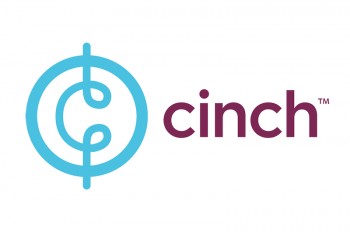Uber Of X: Cinch Is The Uber Of Financial Advice

Practically every aspect of people’s lives is impacted by the financial decisions made from beginning to end. Along the way, there are various milestones that require some level of financial advice.
One company looking to help with that advice is Cinch with its on-demand app. We sat down with Cinch’s cofounder and head of company development, Kerri Moriarty, to learn more about how the company is helping guide everyday financial consumers with on-demand finance advice.
PYMNTS: In your own words, what is Cinch about?
KM: Cinch is about making it easy for everyone to have access to unbiased financial advice, specific to their personal situation. Big and small financial decisions pop up all the time, and we want Cinch to be there to help people be sure they’re always making the best choices with the goal of working to improve overall financial health as an on-demand financial advisor. Wonder if you should get the newest iPhone? Wondering what’s really a fair price for that home you want to buy? Should you buy a home at all? Just open the Cinch app and enter the information, and we’ll let you know.
PYMNTS: What’s the story behind how Cinch started?
KM: The founding team at Cinch comes from a broad background in financial services, and we have all seen firsthand how difficult it is for consumers to get good advice and make optimal financial decisions. Beyond that, we’re all just real people who have encountered some financial decisions where we wish we had real-time access to advice on what to do next but found that all the other recommendation services out there are biased because they get paid by the products and companies they recommend. We set out to do things a little differently, by looking at the entire financial product inventory and refusing to accept payment from any company or product. That way, when consumers need a recommendation, they can be sure Cinch has truly identified the one that is actually best for you.
PYMNTS: How does the pricing model work, and how does Cinch get paid?
KM: Cinch comes with a free trial and then has a monthly fee for continued use. We think of it like a true client and advisor relationship. To truly remain unbiased, we ask customers to pay a fee. The monthly fee covers the on-demand aspect of a user initiating a recommendation and also the always-on supervision of finances. If something is wrong or should be changed, like expensive car insurance or a better credit card debt rate, Cinch reaches out to the customer.
PYMNTS: Who does Cinch see as its competition?
KM: There are some budgeting and credit card tools like Mint or NerdWallet that we consider competitive that offer on-demand financial recommendations, but hardly any do so in the context of consumers’ entire financial situation. We think there is a big opportunity for Cinch to be one of the first companies in the FinTech space to offer a dedicated and unbiased financial advisor anytime it’s needed.
PYMNTS: How many rounds of funding has Cinch received?
KM: We are fortunate that we have been privately funded by a single investor, so we haven’t done any formal investment rounds. So far, we’ve raised about $8.5 million.
PYMNTS: What does the term Uber of X mean to you,and how does Cinch fit that mold?
KM: To me, Uber of X means using technology to make something available to me whenever I want. I think Cinch is the Uber of your financial life because it’s always on and ready for users. Just like Uber is there for a ride home at any time, Cinch is there for customized financial advice at any time.
PYMNTS: As most startups have their fair share of hiccups, can you share a few lessons-learned anecdotes?
KM: We’ve definitely learned a lot along the way. I think one of the most important lessons learned, especially when it comes to tech or software, is that it’s important to just get something out in front of users. The longer you wait to test designs or features or even launch your product, the more risk you have of something “better” coming along or the needs of your customers changing. I remember we once worked on a specific feature in our experience for so long to make sure it was perfect, and when we finally got it in front of some users for testing, we realized it was a feature that they didn’t actually care about at all. We wasted a lot of time working on something our users didn’t want in our product.
PYMNTS: What are Cinch’s 2017 goals?
KM: The goal I’m most excited about is publicly launching our app this summer. We’re also hoping to quickly add other financial product recommendations to the software in addition to the ones we’ll launch with. Our biggest goal is just to get people using Cinch and prove that we’re here with financial guidance whenever it’s needed and that we’ll save users a lot of money and time along the way.
